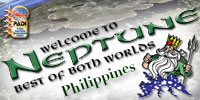Filefish - Monacanthidae
FILEFISH - MONACANTHIDAE
Filefish are very closely related to the triggerfish and also have a long spine in the first dorsal fin. Their skin has a rough sandpaper or file-like surface, which is where the English name comes from. This genus comes in many shapes and colors, depending on their habitat. Filefish are not very good swimmers, which is why they mostly try to blend into their surrounding. They swim or hover by making wavy movements with their second dorsal and anal fins. All filefish have a small mouth with strong teeth. Some feed solely on coral polyps while others also eat crustaceans, worms, small fish and algae. Filefish prefer protected shallow coral reefs. No information about their reproduction is available at present. Length: 3 cm.Distribution: from Indonesia to Philippines, Palau and Great Barrier Reef.Grey to cream with patches of light brown spots, males have a black ocellus abovethe anal-fin. Solitary or in small groups between soft -or fire coral and gorgonians.In lagoons and coastal reefs, from -2 to -15 m. Length: 24 cm.Distribution: from Malaysia to Indonesia, Philippines and New Guinea.Yellow to light brown bodycolour, covered with numerous light-to dark brown spots. White-ish blotch behind pectoral fin, green to dark brown patches on body.Lives solitary on reef flats, lagoons and seagrass beds to -10 m. Length: 18 cm.Distribution: from E- Africa to S- Japan and E- Australia.Long white body with two brown horizontal stripes on each side. Dorsal spine in front of the eye, small gold points on the body. Black patch on the body. Solitary, in pairs or in a small group. Among seagrass or weeds of sheltered coastal reefs, from -2 to -55 m. Length: 14 cm. Distribution: E- Africa to SW- Japan, Mariana Is, Tonga, Samoa, New Caledonia, GBR. Blue to grey head and front body, brown to green rear body and orange tail fin. Dark vertical bar above pectoral fin base. Lives solitary, in lagoons and seaward reefs to -20 m. Length: 10 cm.Distribution: from Sumatra to SW- Japan, Fiji, Tonga and Great Barrier Reef.Blue to Brown head, Orange body with red or orange tail. The tail has a yellow design and a blue margin at the end. Solitary or in pairs, on seaward reefs from -2 to -40 m. Mostly below 15 m. Length: 12 cm. Distribution: from Indonesia to S- Japan, Papua New Guinea and Australia.Pale brown to green-yellow, with small brown spots or dark brown blotches, large dark brown spot underneath soft dorsal fin. Solitary, on sand or weed covered bottoms of coastal reefs, from -1 to -46 m. Older males become longer with age. Length: 11 cm.Distribution: from E- Africa to S- Japan, Marshall Is, G.B.R. and New Caledonia.Mimic’s the poisonous pufferfish Cathigaster valentini. White to cream body, four dark saddles on back from which two have an extension down to the belly. Spots and lines on snout. Solitary or in small groups, in lagoons and seaward reefs from -1 to -25 m. Length: 8 cm.Distribution: East Andaman Sea, Phuket and Similan Islands (Thailand).Dark brown upper body which fades to yellow or white on the belly.Numerous small round and elongate white spots, which become smaller on snout and tail fin. Dark spot on back. Mimics the puffer fish Canthigaster solandri. Solitary, among coral reefs, from -5 to -20 m. Length: 12 cm.Distribution: E- Africa to SW- Japan, Philippines, Samoa, N. Caledonia and G.B.R.Similar to O. halli, which is endemic in the Red Sea. Blue-green with rows of orange spots on body and head, black spot on tail fin. Mostly in pairs, but often seen in groups. Clear lagoons and seaward reefs, from -5 to -35 m. Feeds exclusively on the polyps of Acropora corals. Length: 31 cm.Distribution: from Sumatra and Malaysia to S- Japan and Great Barrier Reef.From dark brown to grey-white and yellow. Fine dark brown horizontal lines on body and snout, body covered with many skin-flaps. Brown dots on transparent dorsal, anal and tail fins. Among algae and seagrass fields of coastal reefs, from -2 to -25 m. Length: 23 cm.Distribution: from E- Africa to S- Japan, New Guinea and Marshall Islands.Yellow-browish body with a brown to black mottled pattern. Black band between the eyes, white band on tail base and black and yellow tail fin.Shy, stays close to shelter. Lives solitary on coastal and outer reefs, from -1 to -40 m. Mostly below -15 m. Length: 25 cm.Distribution:R. Sea, S- Africa to S- Japan, Micronesia, Fr. Polynesia, L. Howe Is, G.B.R.Blue-grey to green body colour, yellow to brown lines on head and polygonal spots on body. White spot on upper tail base. Solitary, on sand, among weeds and seagrass. In current-rich lagoons and outer reefs, from -2 to -20 m. Shy, feeds on bentic organisms. Length: 38 cm.Distribution: E- Africa to S- Japan, Hawaii, Fr. Polynesia, Mexico and Colombia.Grey-brown to grey-blue with some vague dark vertical lines on rear body.White mouth, four yellow spines on tail base and yellow tail fin with dusky rays.Solitary or in pairs, lagoons, coastal and offshore reefs, from -6 to -35 m.Feeds on live branching corals, algae, sponges, sea urchins and molluscs. Length: 75 cm. Distribution: Circumtropical.Light brown to olive green, irregular blue spots and lines mixed with black spots.Blue circle around the eyes, spine in front of dorsal fin.Feeds on a wide variety of plants and invertebrates. Solitary, prefers lagoons and seaward reefs from -2 to -80 m. Length: 10 cm.Distribution: from E- Africa to SW- Japan, Fiji and Australia.From brown to green, is able to change colour to mix in his surroundings.Long first dorsal fin with barred spine, numerous skinflaps, white area on mid-body.Solitary and mainly in lagoons or sheltered reefs with seagrass.Can be found on depths of -1 to -20 m. Length: 7 cm.Distribution: Indonesia to S.W- Japan, Papua New Guinea, New Caledonia, Australia. From pale brown to green with a irregular dotted-stripes pattern. Short skin flaps on body, first dorsal and pelvic fin. Solitary, mostly found between or next to soft corals. Lagoons and coastal reefs, from -2 to -12 m.




























